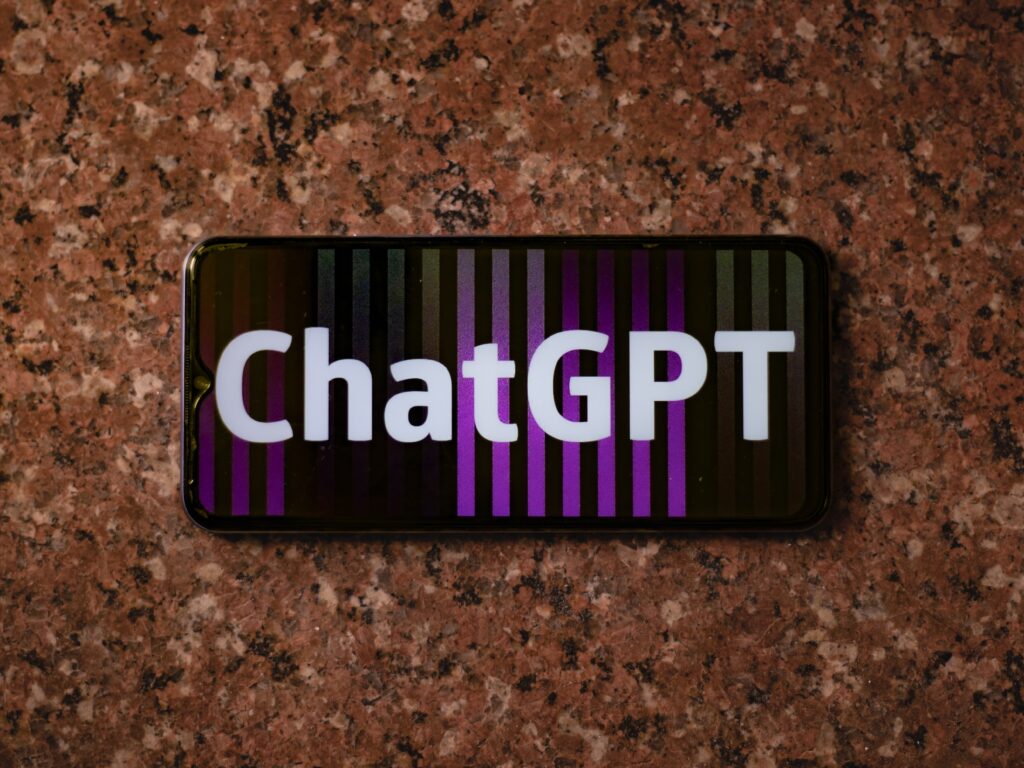The Token mechanism used by ChatGPT is a way of converting text into a form that computers can understand and process. This process can be explained using the following simple steps:
- Segmentation: The input text is divided into smaller units called “Tokens.” A token can be a character, a word, or a single letter, depending on the language and model design.
- Encoding: Each token is converted into a number, which represents the token’s index in the model’s vocabulary. This allows the computer to represent the original text information with numbers.
- Processing: The model receives these number sequences, performs calculations and analysis to understand the meaning of the input text, and generates a response.
- Decoding: The model generates a new sequence of numbers based on the calculation results, and then converts these numbers back into tokens to form a text response.
- Merging: The generated tokens are combined into complete sentences so that users can understand and read them.
Through the Token mechanism, ChatGPT is able to generate responses based on the input information provided by the user. The entire process involves breaking down text, converting it into numbers that computers can process, and reassembling the generated number sequence into meaningful text. This allows us to engage in natural language conversations with ChatGPT and obtain useful information and answers.
What is the maximum number of Tokens that ChatGPT can input and output?
The maximum number of input and output tokens for ChatGPT depends on the model size and parameter configuration. In OpenAI’s GPT-3.5 Turbo model, the maximum input and output token count is 4096. However, GPT-4 has increased this count fourfold, up to 32K (though currently only available to specific users), and currently the maximum token count for the publicly available ChatGPT4 is 8192. This number may vary in practical applications due to limitations of hardware and memory, among other factors. Additionally, to better handle long texts, GPT-3 also offers a streaming API that allows users to split long texts into smaller chunks for processing and generate coherent output texts.
Why is there a limit on the number of Tokens?
Limiting the number of Tokens is mainly due to the following reasons:
- Calculation resources limitations: Deep learning models, especially large language models like GPT, require a significant amount of computational resources for inference and training. As the number of Tokens increases, the computational demand grows exponentially, which can result in a very slow or even impossible calculation process.
- GPU memory limitations: Deep learning models usually run on GPUs, and GPU memory is limited. Increasing the number of Tokens will increase GPU memory requirements. Once it exceeds a certain threshold, the model may not run properly on the GPU.
- Context window limitations: The GPT model has a fixed context window size designed to capture relevant information from the input text. This window size limits the text range that the model can consider. When it exceeds this range, the model may not fully understand the input context, which can affect the quality and relevance of the generated response.
- Avoiding excessive computation: Limiting the number of Tokens helps ensure that the model does not waste computational resources on overly long texts. In many cases, processing short texts is already enough to meet the requirements. Limiting the number of Tokens can make the model run more efficiently and shorten the response time.
- Difficulty in model training: As the number of Tokens increases, the model training process becomes more complex, which can result in slower convergence or even failure to converge. Limiting the number of Tokens helps reduce the difficulty of model training, improve model stability and performance.
In summary, limiting the number of Tokens is due to factors such as limitations in calculation resources, GPU memory, context window, avoiding excessive computation, and reducing the difficulty of model training. These limitations ensure that the model can run efficiently while maintaining good performance and generating high-quality responses. However, with the development of deep learning technology and the improvement of hardware performance, future models may be more powerful and able to handle more Tokens, further enhancing language understanding and generating capabilities.

How many known tokens are there in the ChatGPT model?
The vocabulary size of ChatGPT (based on GPT-3) depends on the specific version of the model. GPT-3 has multiple versions with varying sizes and performance. The vocabulary size typically ranges from 50,000 to 500,000, but the specific number may vary depending on the model. It is worth noting that the vocabulary of GPT-3 includes tokens from various languages, not just English. This allows GPT-3 to understand and generate text in multiple languages. The tokens in the vocabulary include words, characters, and some special symbols such as line breaks and spaces.
How does the GPT model analyze and process numerical sequences to understand the input text and generate responses?
The GPT model processes numerical sequences through several main stages to understand the input text and generate responses:
- Embedding layer: The model first converts the input numerical sequence (token index) into a continuous vector representation. These vectors capture the semantic and syntactic relationships between the terms in a high-dimensional space.
- Self-attention mechanism: GPT uses the Transformer structure as its core. In the Transformer, the self-attention mechanism allows the model to focus on the interrelationships between different positions in the input sequence. This helps the model capture contextual information and long-range dependencies in sentences or paragraphs.
- Multi-layer Transformer: GPT models typically contain multiple layers of Transformer structure, with each layer building further abstraction and representation on the basis of the previous layer. These layers can capture different levels of semantic and syntactic structure, allowing the model to better understand the input meaning.
- Language model objective: GPT is a generative pre-trained language model, whose goal is to predict the next token in the input sequence. During training, the model learns to generate syntactically reasonable and semantically coherent text.
- Decoding stage: When generating a response, GPT uses autoregressive decoding, which means it generates one token at a time and uses the previously generated tokens as new input. The model predicts the next most likely token based on the input context and the tokens generated so far.
- Probability distribution and sampling strategy: The GPT model outputs a probability distribution for each possible token. Typically, we use some sampling strategy (such as greedy decoding, beam search, or top-k sampling) to choose the final token from this probability distribution.
- Generation termination conditions: When a specific condition is met (such as generating a specific number of tokens or encountering a specific termination symbol), the model stops generating. The generated token sequence is then decoded into the final text response.
Through these stages, the GPT model can process and analyze numerical sequences, understand their semantic and syntactic structure, and generate appropriate responses based on context. This gives the GPT model powerful natural language understanding and generation capabilities, enabling it to handle various language tasks such as question answering, summarization, translation, and more.
The success of the GPT model is largely due to its Transformer architecture, self-attention mechanism, and generative pre-training strategy. These features enable the model to capture the semantic and syntactic information in input text and apply it to generating high-quality responses. As optimization and development continue, the GPT model is expected to continue to enhance its language abilities, providing more powerful and practical solutions for various application areas, including natural language dialogue, knowledge extraction, creative writing, intelligent assistants, and more. Moreover, with the advancement of deep learning technologies, we will continue to witness breakthroughs and innovation in language understanding and generation by GPT and its derivative models.
How does ChatGPT maintain consistency and coherence in its output content during a series of consecutive chat sessions?
Maintaining consistency and coherence in the output content of ChatGPT during a series of continuous chats is challenging. However, there are several methods that can help improve the model’s performance in this regard:
- Contextual information: During the conversation, providing the previous conversation content as context to the model helps it understand the correlation between the previous and subsequent conversations and generate more coherent responses on this basis.
- Session usage: Creating independent sessions for each user can help maintain consistency in output content throughout the conversation. This helps the model remember specific user requirements, preferences, and contextual information.
- Modification of model generation parameters: By adjusting model generation parameters, such as temperature and beam search width, the style and consistency of the model’s generated responses can be affected. For example, lowering the temperature makes the model more conservative and generates more deterministic responses, which helps improve coherence.
- Setting limitations during the generation process: Limiting the responses generated by the model, such as maximum and minimum length, can avoid the model generating responses that are too short or too long, ensuring that the output content remains consistent.
- Using contextual markers: Adding specific markers or commands to the input context guides the model to generate more coherent and consistent responses. For example, at the beginning of the conversation, providing information about target style and context to the model.
- Fine-tuning the model: Fine-tuning the model based on specific application scenarios and goals can help the model adapt to specific conversation styles and contexts. This makes it easier for the model to maintain consistency and coherence during the generation process.
- Real-time evaluation and feedback: Real-time evaluation of the model based on user feedback and satisfaction ratings, and adjusting the model parameters based on the evaluation results, can help improve the model’s consistency and coherence during continuous chatting.
Note that despite the above methods helping to improve ChatGPT’s performance in continuous conversations, due to the inherent limitations of the model, maintaining perfect consistency and coherence remains challenging. The model may still occasionally generate inconsistent or incoherent responses. However, with the continuous development and optimization of model technology, we can expect future GPT models to perform better in maintaining consistency and coherence. This will enable ChatGPT to more effectively respond to continuous chat scenarios and provide more natural and high-quality dialogue experiences for various applications.

How are the tokens containing contextual information combined with the latest input tokens?
In using ChatGPT for continuous chatting, the combination of contextual information tokens and the latest input tokens is crucial. Typically, we use the entire conversation history (including user and model interactions) as contextual information and provide it to the model together with the latest input. This helps the model understand the correlation between previous and subsequent conversations and generate more coherent responses on this basis.
The specific operation steps are as follows:
- Tokenize the conversation history: Divide the previous conversation content (including user input and model response) into tokens. These tokens are arranged in the order in which they appear in the conversation.
- Add special markers: To help the model distinguish between user and model conversations, special markers (such as <user> and <bot>) can be used to indicate the roles in the conversation. These markers are inserted before the corresponding conversation fragments to provide clear context role information.
- Concatenate tokens: Concatenate the contextual information tokens and the latest input tokens in the order of the conversation. This way, the model can understand the entire conversation history and generate responses based on this information.
- Process token length limitations: Due to the maximum token limit of the model, it may be necessary to truncate or otherwise process the concatenated conversation to ensure that the input token count does not exceed the limit. When truncating, important information in the conversation should be retained to avoid affecting the model’s ability to generate responses.
- Input to the model: Input the concatenated token sequence to the model. The model will generate a response based on this sequence and output the generated response in token form.
- Decode the output: Decode the model’s output tokens into natural language text. This will be the model’s response to the latest input.
Through the above steps, ChatGPT can generate appropriate responses based on the entire conversation history (including contextual information tokens and the latest input). Combining the conversation history and the latest input helps ensure that the model fully understands the context and generates responses that are coherent and consistent.
Note that due to the maximum token limit of the GPT model, it may be necessary to trim the conversation history while retaining important information. Additionally, depending on the specific application scenario and requirements, it may be necessary to adjust the concatenation strategy, such as adding additional special markers or metadata information to guide the model in generating more accurate responses. With the continuous optimization of the model and the advancement of deep learning technology, future GPT models may perform better in maintaining contextual consistency and coherence, providing users with more natural and high-quality dialogue experiences.
How does ChatGPT determine the importance of historical conversations and perform pruning?
ChatGPT does not directly determine the importance of historical conversations for pruning. However, developers can use some strategies to retain important information as much as possible when processing conversation history. Here are some suggestions:
- Keep the latest conversation: Since recent conversations are usually most relevant to the current topic, priority can be given to retaining the latest conversation fragments. When necessary, earlier conversation content can be deleted to fit the model’s maximum token limit.
- Retain key questions and answers: In conversation history, some questions and answers may have significant meaning for the current topic. Identifying these key pieces of information and retaining them can ensure that the model fully understands the context when generating responses.
- Customize pruning strategies: Depending on the specific application scenario and requirements, custom pruning strategies can be developed, such as retaining the longest conversation fragments, or keeping the conversation content of specific roles (such as users or bots). This can prevent the deletion of important information while maintaining the model’s maximum token limit.
- Create a context window: Divide the entire conversation history into multiple context windows, each of which contains a certain number of conversation fragments. When generating a response, only use the content of the latest few windows, rather than the entire conversation history, to avoid the model becoming too verbose and imprecise due to too much historical conversation information.
It should be noted that pruning conversation history may affect the quality of ChatGPT’s responses. Therefore, when pruning, it is necessary to maintain the integrity and consistency of the context as much as possible while retaining important information. At the same time, it is necessary to choose an appropriate pruning strategy based on the specific application scenario and requirements to improve the quality of ChatGPT’s responses.








